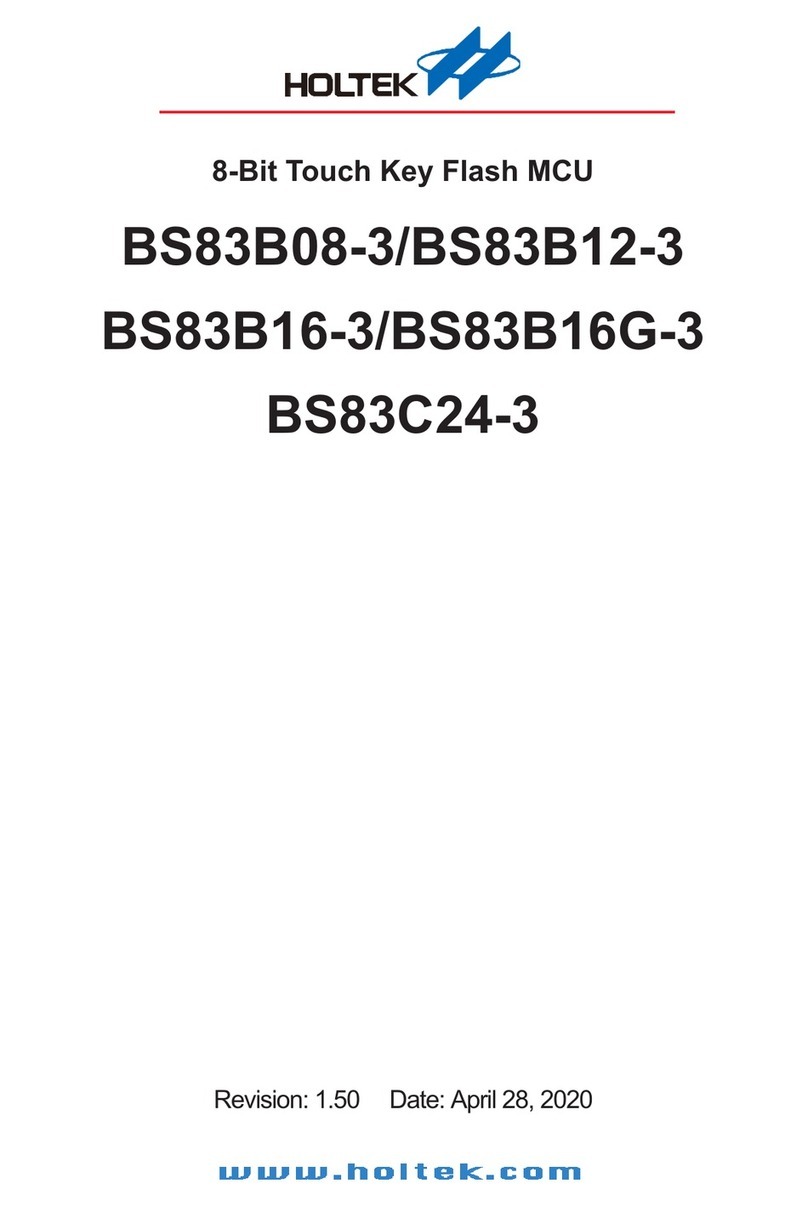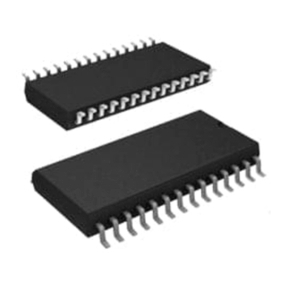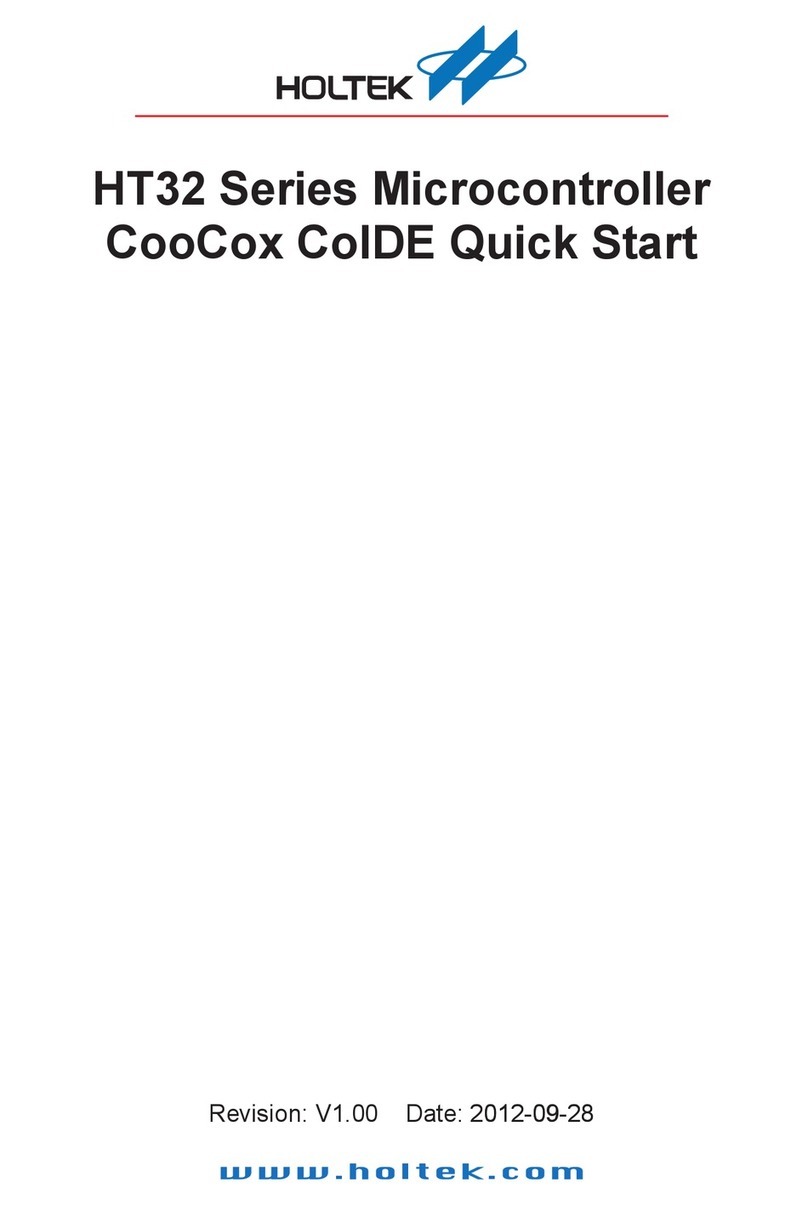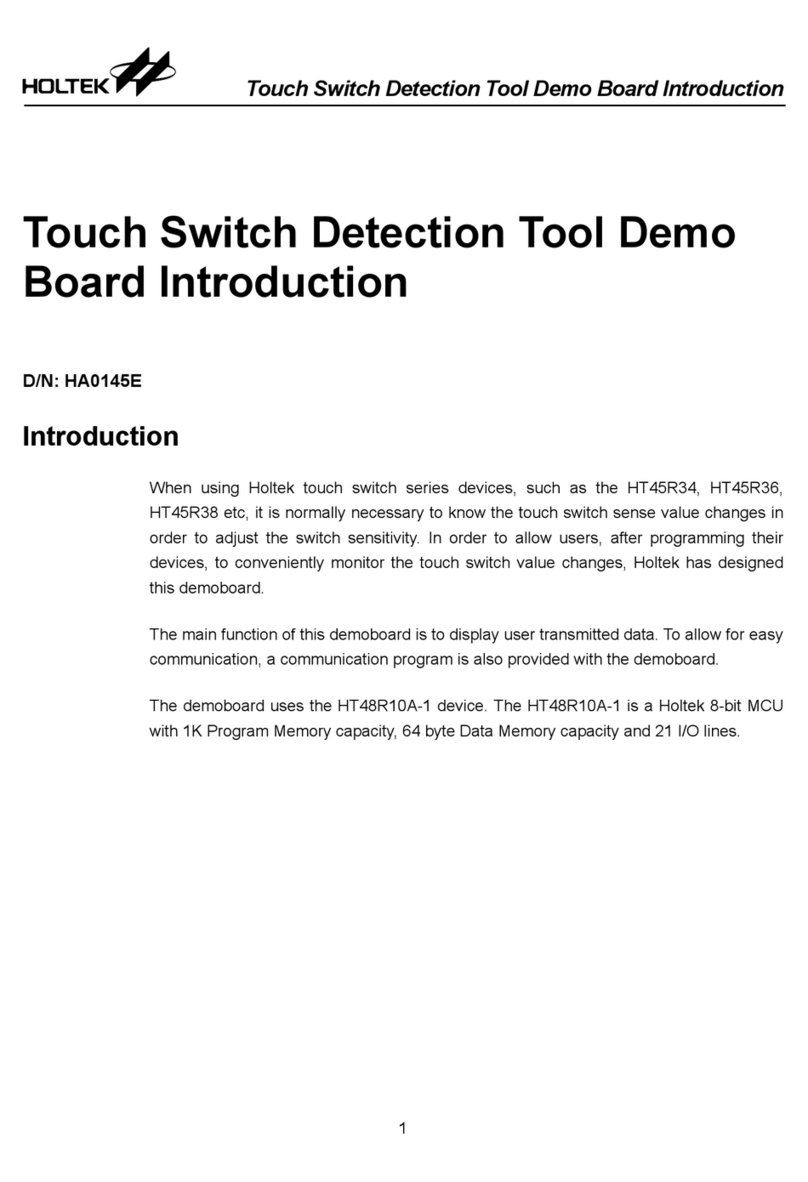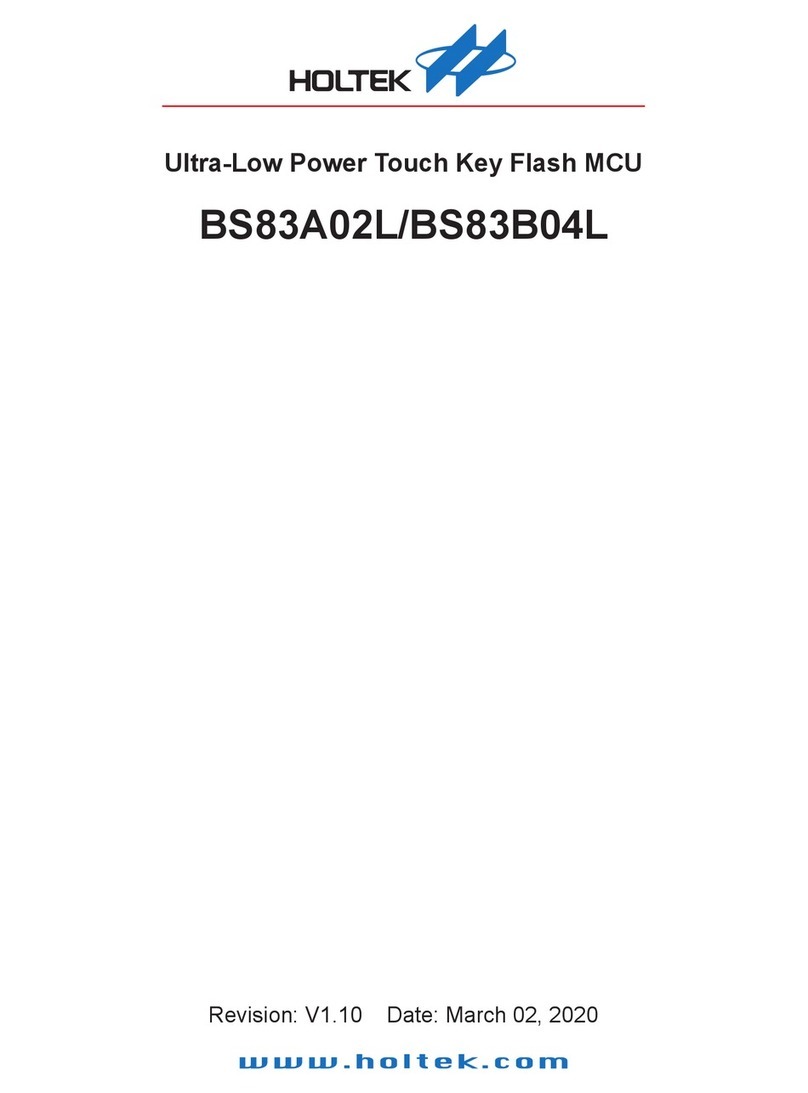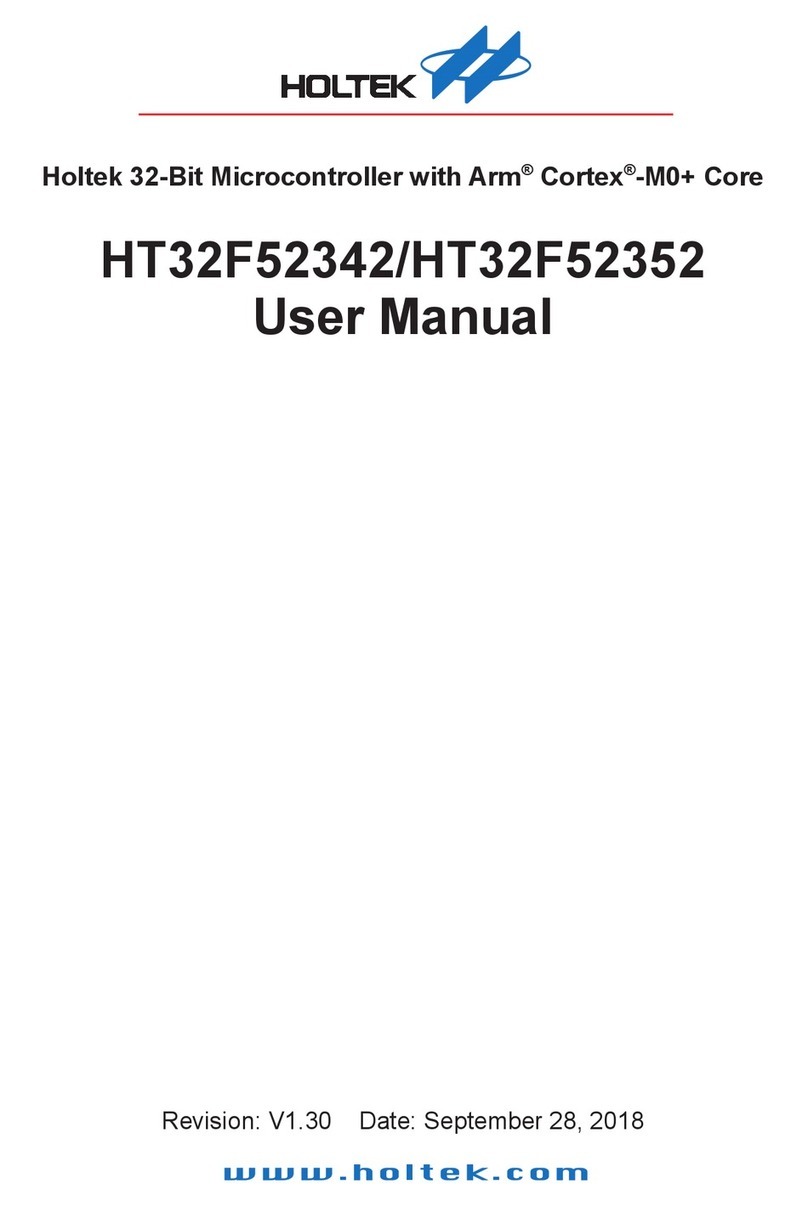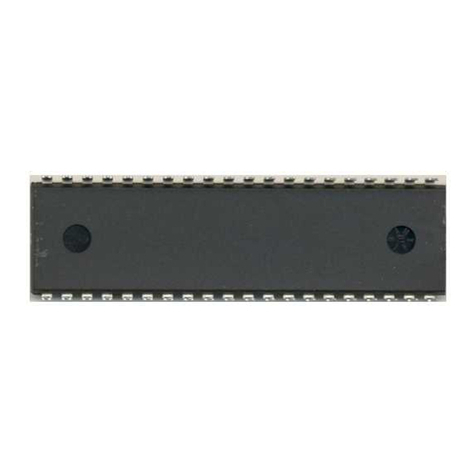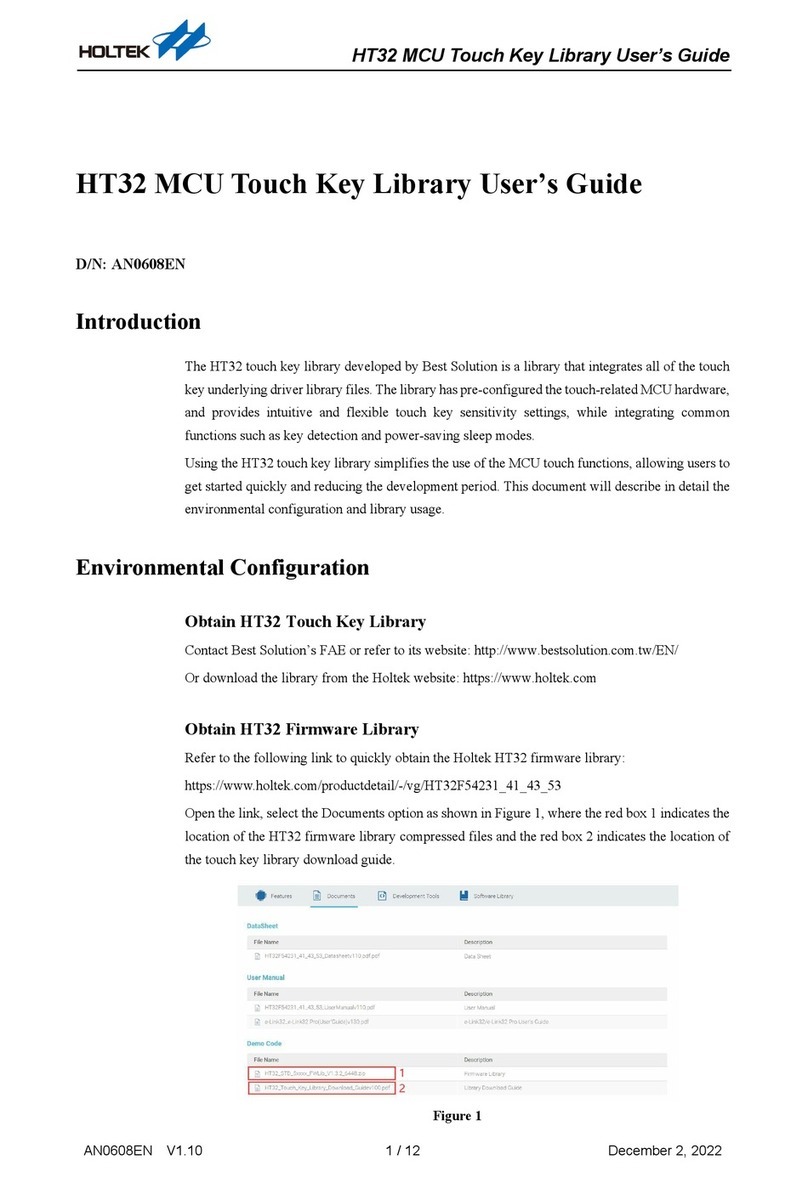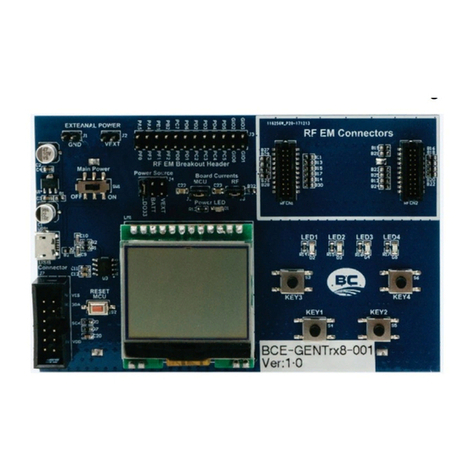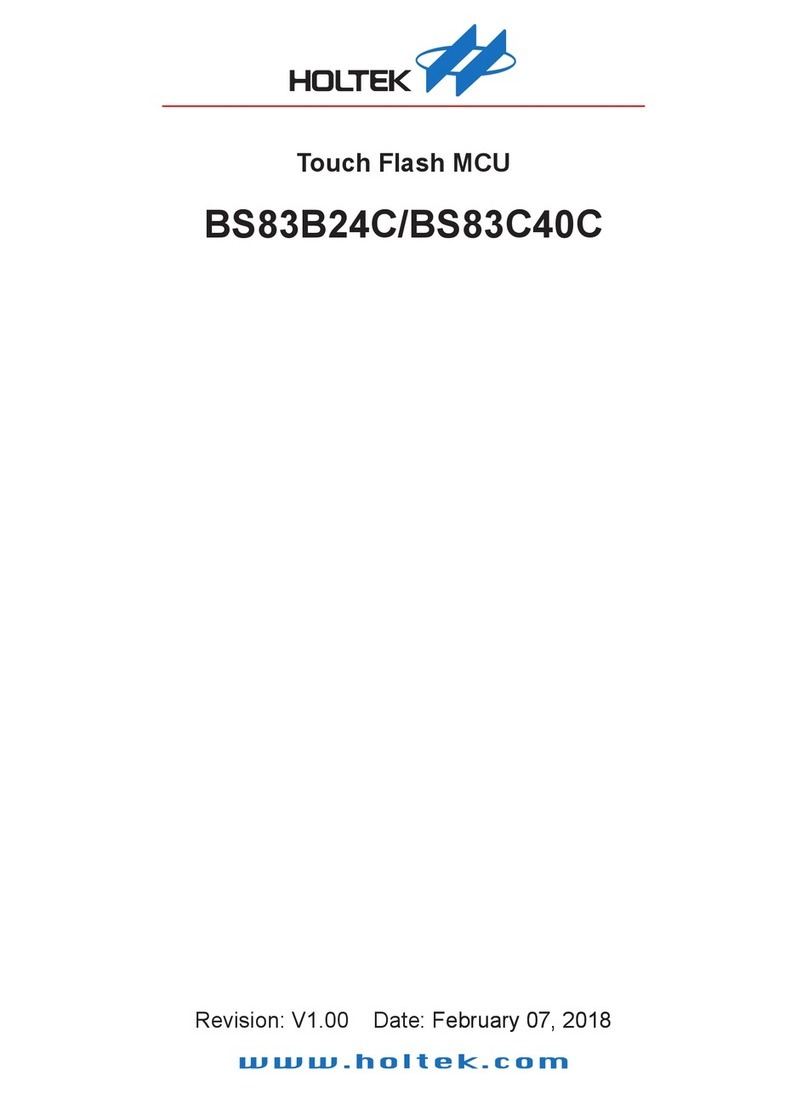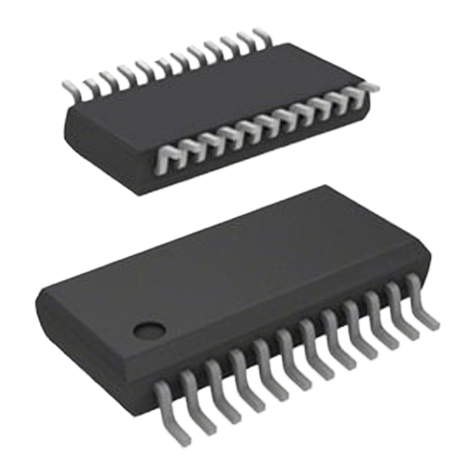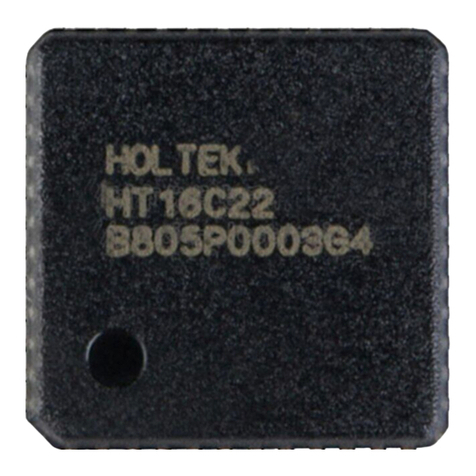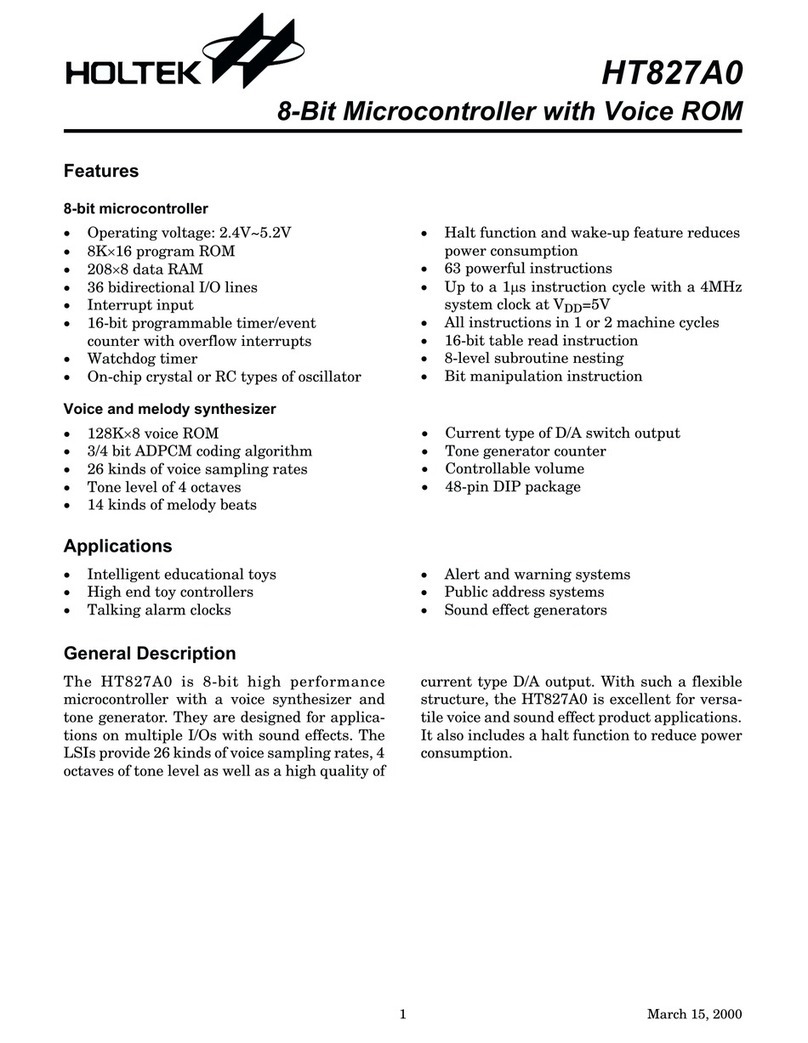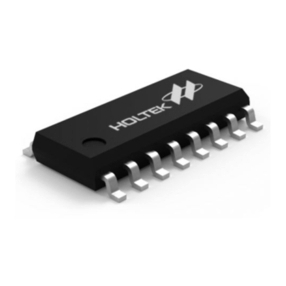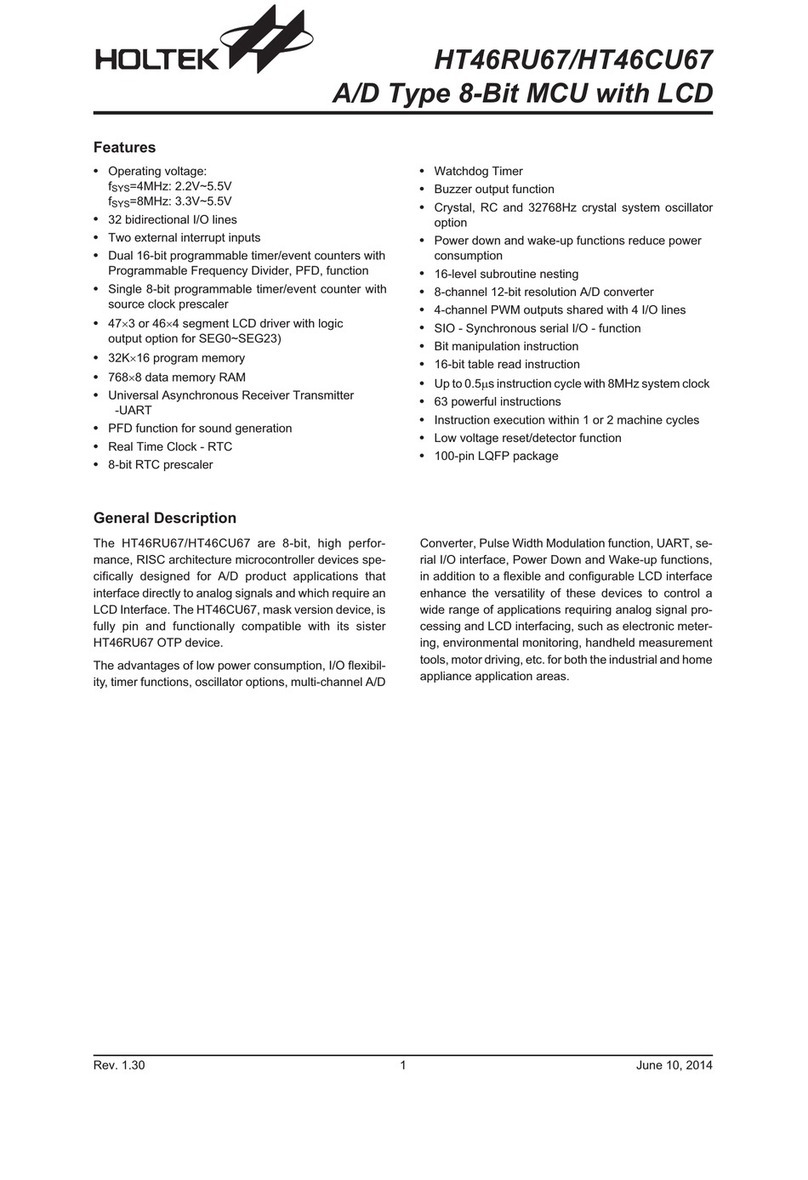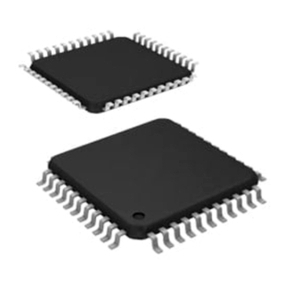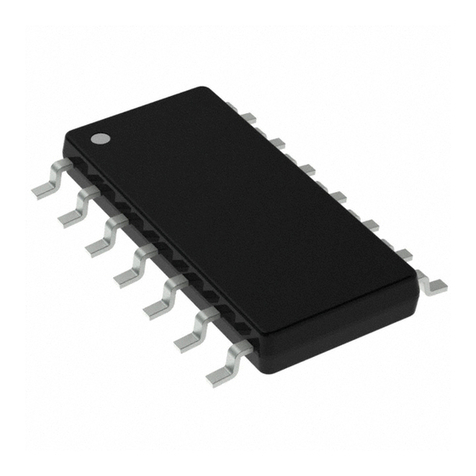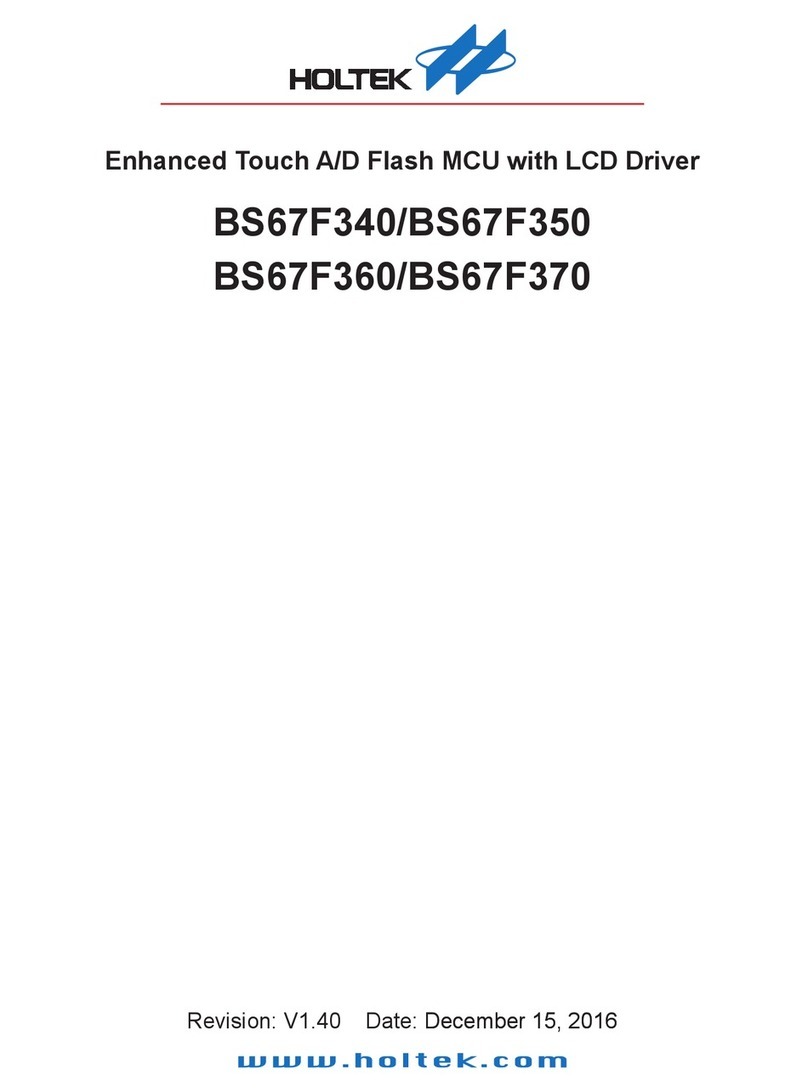
Rev. 1.00 2 March 24, 2020 Rev. 1.00 3 March 24, 2020
BS83A04C
4-Key Enhanced Touch I/O Flash MCU
BS83A04C
4-Key Enhanced Touch I/O Flash MCU
Memory Pointers – MP0, MP1 ....................................................................................................22
Bank Pointer – BP.......................................................................................................................23
Accumulator – ACC.....................................................................................................................23
Program Counter Low Register – PCL........................................................................................23
Look-up Table Registers – TBLP, TBHP, TBLH...........................................................................23
Status Register – STATUS..........................................................................................................24
Emulated EEPROM Data Memory ..................................................................... 25
Emulated EEPROM Data Memory Structure ..............................................................................25
Emulated EEPROM Registers ....................................................................................................26
Erasing the Emulated EEPROM .................................................................................................29
Writing Data to the Emulated EEPROM......................................................................................29
Reading Data from the Emulated EEPROM ...............................................................................29
Programming Considerations......................................................................................................30
Oscillators ........................................................................................................... 31
Oscillator Overview .....................................................................................................................31
System Clock Congurations......................................................................................................31
Internal High Speed RC Oscillator – HIRC .................................................................................32
Internal 32kHz Oscillator – LIRC.................................................................................................32
Operating Modes and System Clocks .............................................................. 32
System Clocks ............................................................................................................................32
System Operation Modes............................................................................................................33
Control Registers ........................................................................................................................34
Operating Mode Switching ..........................................................................................................36
Standby Current Considerations .................................................................................................39
Wake-up......................................................................................................................................39
Watchdog Timer.................................................................................................. 40
Watchdog Timer Clock Source....................................................................................................40
Watchdog Timer Control Register ...............................................................................................40
Watchdog Timer Operation .........................................................................................................41
Reset and Initialisation....................................................................................... 42
Reset Functions ..........................................................................................................................42
Reset Initial Conditions ...............................................................................................................44
Input/Output Ports .............................................................................................. 47
Pull-high Resistors ......................................................................................................................47
Port A Wake-up ...........................................................................................................................48
I/O Port Control Registers ...........................................................................................................48
Pin-shared Functions ..................................................................................................................49
I/O Pin Structures........................................................................................................................51
Programming Considerations......................................................................................................51
Timer Module – TM ............................................................................................. 52
Introduction .................................................................................................................................52
TM Operation ..............................................................................................................................52
TM Clock Source.........................................................................................................................52
TM Interrupts...............................................................................................................................52
